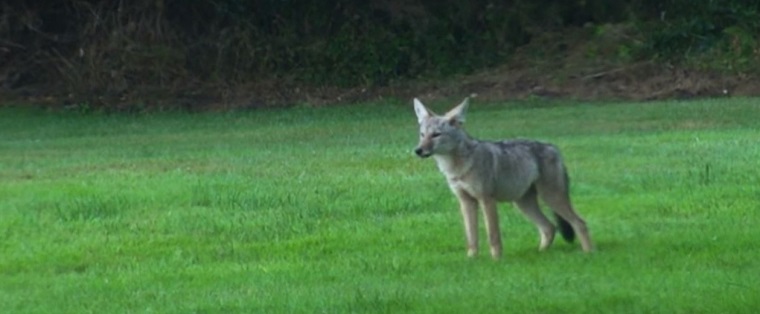-
info@aaanimalcontrol.com
Call us for help in your town
Humane Wildlife Education
Some Ways to Humanely Kill A Coyote on Your Yard
Need coyote removal in your hometown? We service over 500 USA locations! Click here to hire us in your town and check prices - updated for year 2020.
Before we answer this question, why are you trying to kill a coyote in the yard? Killing the animal does seem a little extreme, especially when you think about all the more humane methods of dealing with your nuisance wildlife problem. Also, killing the creature requires you to do an act that many homeowners are just not comfortable with — ending the life of another living creature. Killing a coyote definitely isn’t going to be as simple as swatting a fly with some old newspaper, that’s for sure.

Coyotes, much like most nuisance wildlife, are going to prefer running away from an interaction with humans than stay and fight it out. The animals has got pretty sharp teeth and claws on its side, but that’s still usually no match for an adult human, something they’re aware of. That’s why they run, and fast, when they see you coming.
Killing or trapping coyotes is NOT a good way to deal with the problem. Cage traps would need to be rather large to safely and successfully capture the little beast. Leg hold traps, also sometimes referred to as paw hold traps, are one of the ‘better’ options. Even then, they’re not really any better. Unless you get to the coyote in the lag trap not long after it has been trapped, you’re going to have a hell of a scene on your hands. Other predators will attack if they sense the defenseless animal in the trap. It won’t be able to run away or defend itself. The right between larger predator and coyote will be over in no time at all once one has been trapped or restrained. You will be left to deal with the mess, however.
Although definitely classed as a nuisance animal, the coyote is easy to remove from your land, especially when you make a lot of noise or bring bright lights to the equation. Repellents and deterrents are the best way to remove coyotes from your land so that you don’t need to resort to killing them, but we are talking about the kind of thing that you would spray around. When we talk about repellents and deterrents for nuisance wildlife, such as coyotes, we’re talking about repellent them by taking away the things that attract them. The reason the coyote comes onto your land in the first place is because you have something it wants.
Food is the usual culprit. Small mammals are the most prolific foods on the menu for a coyote, so if you have a rat or mouse infestation, that could be what has brought it closer. Getting rid of the rodent problem will stop coyotes from taking a closer look, and it will also keep other wild critters at bay too. Snakes, for example, are well known to eat rodents, and raccoons, opossums, and a whole bunch of their critters won’t hesitate to prey on the rodents if the situation arises.
In short, a rodent problem will bring other nuisance wildlife problems right to your door.
For more information, you may want to read How to get rid of coyotes or click on one of these guides that I wrote:
How To Guide: Who should I hire? - What questions to ask, to look for, who NOT to hire.
How To Guide: do it yourself! - Advice on saving money by doing wildlife removal yourself.
Guide: How much does wildlife removal cost? - Analysis of wildlife control prices.


















